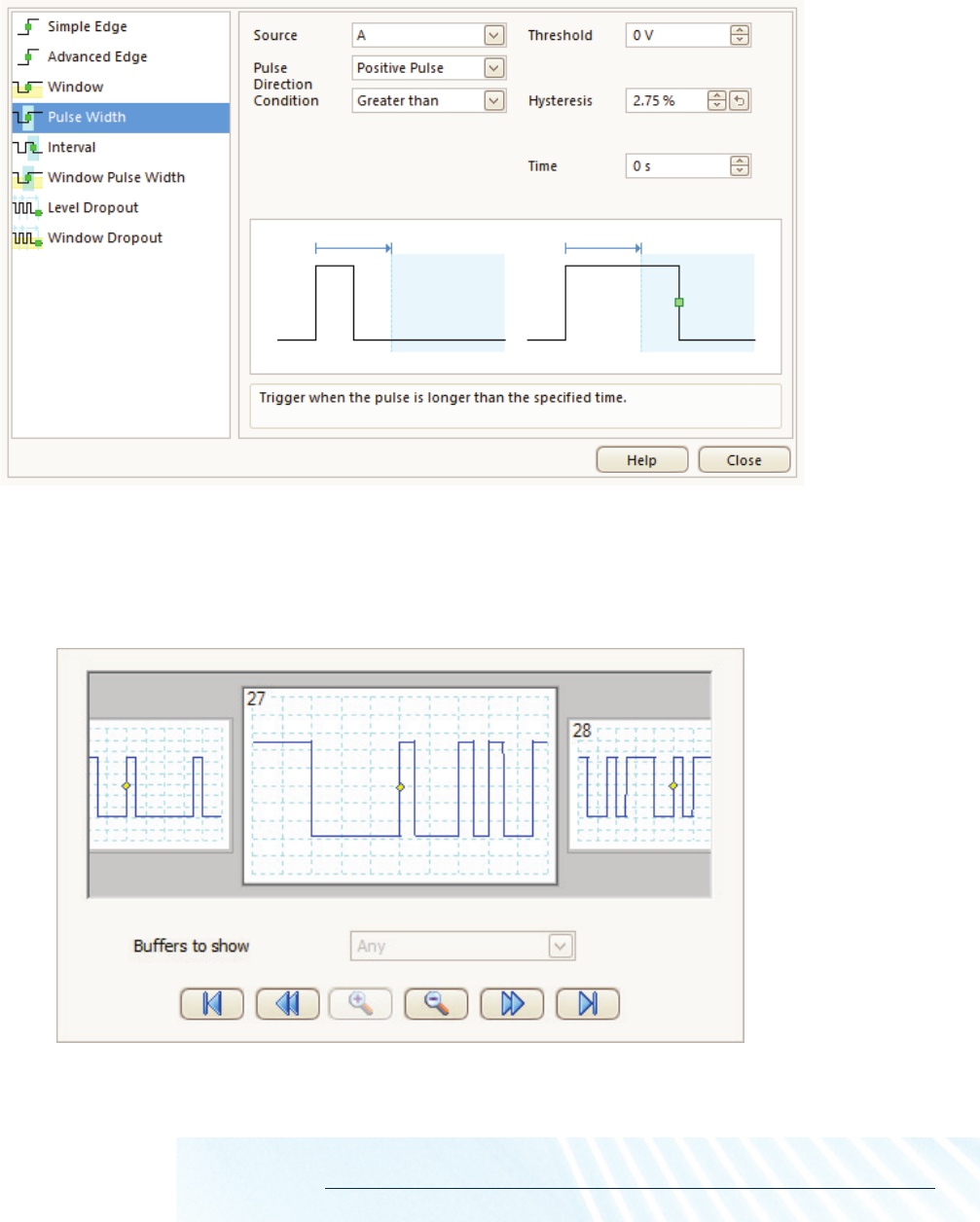Datasheet

PicoScope 2200A Series
Digital triggering
Most digital oscilloscopes still use an analog trigger architecture based on comparators. This can cause time and amplitude errors that
cannot always be calibrated out. The use of comparators often limits the trigger sensitivity at high bandwidths and can also create a long
trigger rearm delay.
For over 20 years Pico have been pioneering the use of full digital triggering using the actual digitized data. This reduces trigger errors
and allows our oscilloscopes to trigger on the smallest signals, even at the full bandwidth. All triggering is digital, resulting in high threshold
resolution within programmable hysteresis and optimal waveform stability.
On selected models, the reduced rearm delay provided by digital triggering, together with segmented memory, allows the capture of events
that happen in rapid sequence. At the fastest timebase, rapid triggering can capture a new waveform every 2 microseconds until the buffer
is full. The mask limit testing function helps to detect waveforms that fail to meet your specifications.
Advanced triggers
As well as the standard range of triggers found on most oscilloscopes, the PicoScope 2200A Series offers one of the best selections
of advanced triggers available. These include pulse width, windowed and dropout triggers to help you find and capture your signal quickly.










